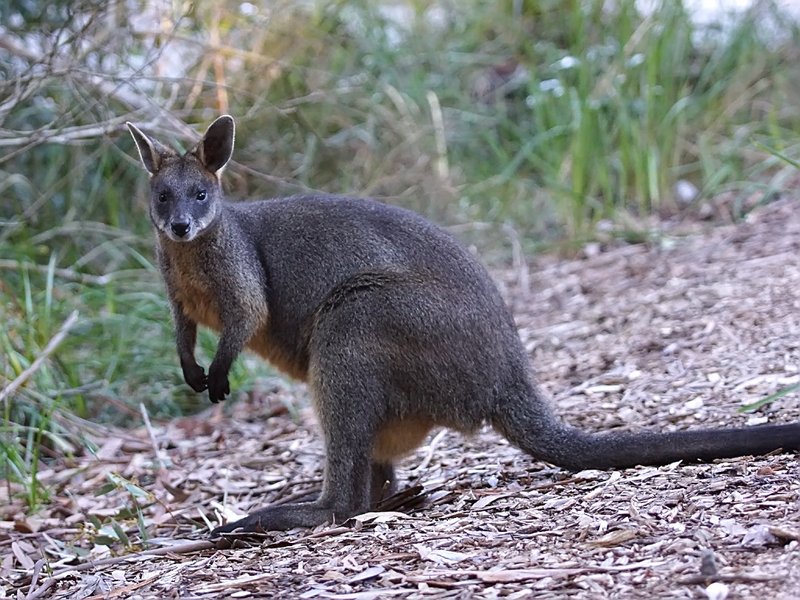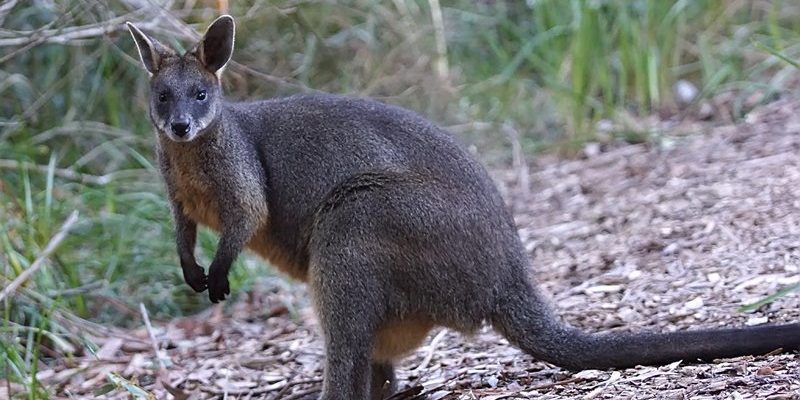
Swamp wallabies are quite remarkable. While they may look like small kangaroos, they have adapted uniquely to their surroundings. They have mastered the art of survival in places where food can be scarce and predators abound. Let’s explore the secrets behind their resilience and discover how these little wallabies navigate their sometimes harsh habitats.
Adaptations for Survival
Swamp wallabies have a few tricks up their sleeves that help them thrive in their unique environments. One of the most interesting adaptations is their diet. Unlike many other wallabies that munch primarily on grass, swamp wallabies have a varied diet that includes leaves, herbs, and shrubs. This flexibility allows them to find food even when some sources are running low.
Another advantage is their physical build. They have strong, muscular hind legs that enable them to hop efficiently over uneven terrain. Unlike their larger relatives, they can easily navigate through thick brush and wetlands, making them less vulnerable to predators. Honestly, it’s like having built-in mud boots for their environment!
Swamp wallabies are also crepuscular. This means they’re most active at dawn and dusk. By foraging during these cooler times, they minimize exposure to the harsh midday sun, helping them conserve energy and stay hydrated. Here’s the thing: timing can make all the difference when it comes to survival.
Water Conservation Techniques
One of the biggest challenges in the wild is finding water, especially in dry spells. Swamp wallabies are masters at conserving water. For starters, they’re pretty efficient when it comes to their metabolism. They can survive on moisture from the plants they eat, which means they don’t always need to drink directly from a water source.
In addition, their renal system is adapted to retain as much water as possible. Their kidneys are highly efficient, helping them produce concentrated urine. This means they lose less water overall. Imagine trying to save every drop of water in a leaky bucket—these wallabies have it down to a science!
When they do need to drink, swamp wallabies often make the most of available sources, such as puddles or dew on grass. Their resourcefulness is truly commendable, and it showcases their ability to adapt to what nature provides.
Natural Camouflage
Ever notice how some animals seem to vanish into their surroundings? Swamp wallabies excel at this with their camouflaged fur. Their dark brown and gray coats blend perfectly with the forest floor and underbrush, allowing them to hide from predators like eagles or dingoes. It’s like wearing a nature-made invisibility cloak!
This natural disguise doesn’t just help them with avoidance; it also plays a role in their feeding habits. When they feed in the early morning or late evening, they’re less likely to be spotted thanks to their effective camouflage. Let me explain: every little advantage can be a game-changer when it comes to survival.
When swamp wallabies sense danger, they become very still. They rely on their camouflage to avoid detection, and if necessary, they’ll make a quick escape. This strategy is just one more way that they navigate their challenging environment.
Social Behavior and Communication
Swamp wallabies may be solitary creatures, but they have intriguing social dynamics. They often live in small groups, which helps them keep an eye out for threats. Communication is key here. They use a range of vocalizations and body language to alert each other to danger.
You might be wondering how they let each other know when a predator is near. It’s simple—when one wallaby senses danger, it may thump its hind leg or make a specific sound, alerting others nearby. This is a clever way to ensure the safety of the group without creating too much commotion.
In addition to alerting each other, swamp wallabies also establish their territories using scent markings. This reduces conflicts with others, allowing them to maintain a peaceful coexistence while still being vigilant about their surroundings. Honestly, it’s a delicate balance that showcases their intelligence.
Adaptation to Seasonal Changes
Seasons change, and with them, so do the challenges of survival. Swamp wallabies are equipped to handle these shifts in their environment. For instance, during the rainy season, lush vegetation flourishes, providing them with abundant food options. However, during dry spells, they adapt by foraging more extensively and adjusting their feeding habits.
One fascinating thing about swamp wallabies is their ability to store fat reserves. These reserves are crucial when food sources become scarce. Think of it like keeping a little extra snack in your backpack for a tough day—you never know when you might need it!
During extreme weather, such as droughts or floods, swamp wallabies can modify their behavior. They may travel farther in search of food or water. This adaptability is essential for their long-term survival and highlights how resilient these animals truly are.
Threats and Conservation Efforts
While swamp wallabies are fascinating and resilient, they still face threats. Habitat loss due to urban development and agriculture has impacted their populations. You might be surprised to learn that these adorable wallabies are classified as near threatened in some areas. This means they need our help to thrive.
Conservation efforts are stepping up to protect their habitats. This includes creating protected areas and restoring native vegetation. Educating the public about swamp wallabies and promoting sustainable land use practices can make a huge difference.
It’s also essential to address predation. In some regions, increased populations of feral animals like cats and foxes pose risks to native wildlife, including swamp wallabies. Creating programs to manage these introduced species is critical for preserving the delicate balance in their ecosystems.
Swamp wallabies are remarkable creatures with an impressive toolkit for survival in harsh environments. Whether it’s their adaptive diets, efficient water conservation, or clever camouflage, they showcase nature’s ingenuity at its best. By understanding their behaviors and the challenges they face, we can help ensure that these charming marsupials continue to thrive.
These little wallabies remind us that resilience comes in many forms. So next time you hear about their unique lifestyle, you’ll know just how amazing they truly are!

